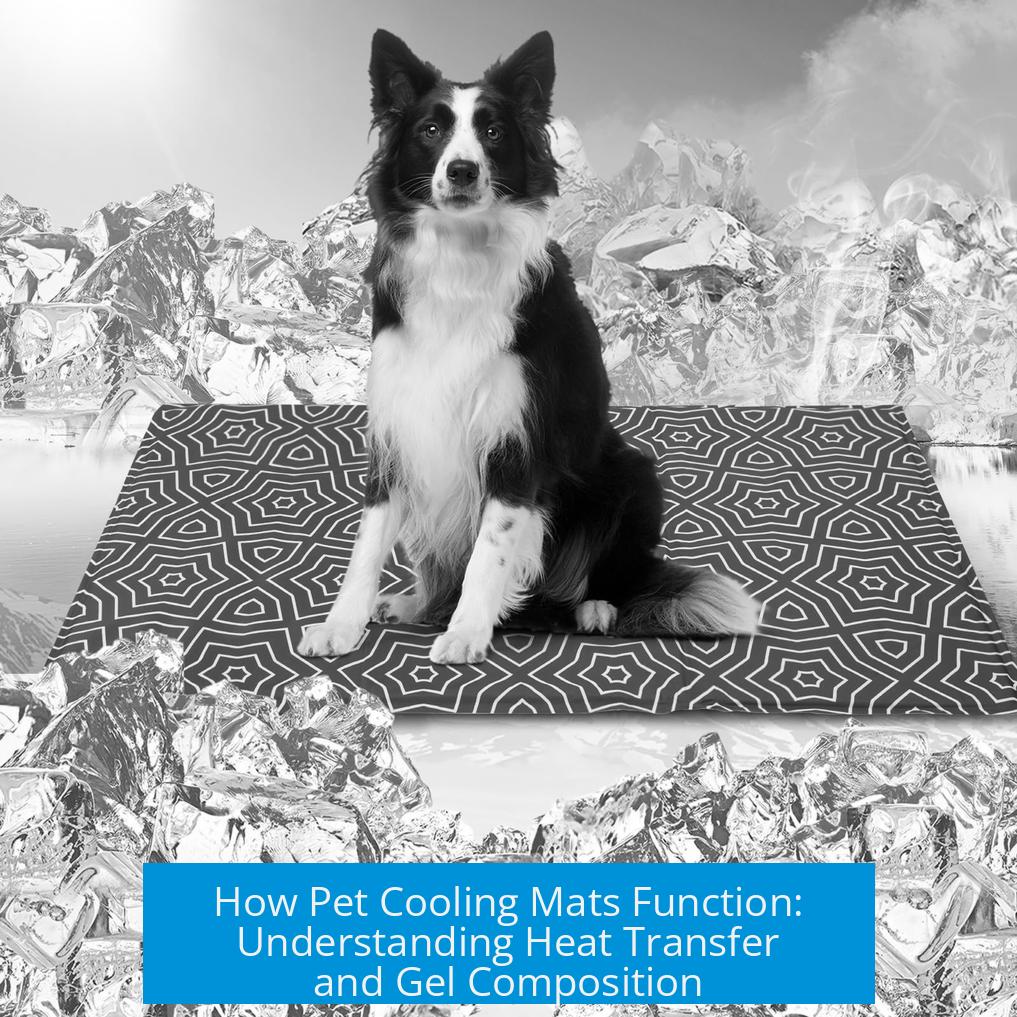How Do Pet Cooling Mats Work?

Pet cooling mats cool pets by transferring heat from their bodies to a gel material inside the mat. This process helps lower the pet’s body temperature without needing external power or chemicals.
Heat Transfer Principle
Pet cooling mats rely on the transfer of heat rather than a chemical reaction. When a pet lies down on the mat, their body heat moves into the gel inside. This heat transfer causes the pet’s body temperature to drop as heat moves away from the skin.
The gel inside absorbs this heat, temporarily warming up while the pet feels cooler. This is similar to placing a warm hand in cool water, which initially feels cold until the water warms.
Heat Dissipation and Recharge
After the pet leaves the mat, the absorbed heat slowly dissipates from the gel into the surrounding air. This cools the gel back down, preparing it for the next use. This recharge process allows the mat to be reused without needing refrigeration or external cooling.
Composition of the Cooling Gel
The gel used in these mats typically consists of a propylene glycol mixture. This substance acts similarly to antifreeze or coolant, helping the mat absorb and hold heat efficiently. It does not produce cooling through chemicals but by its ability to absorb heat from the pet’s body.
Theoretical Considerations
While the idea of passive cooling mats may seem to challenge thermodynamics, the system is feasible. It simply uses heat transfer principles rather than an endothermic reaction. The mat does not create cold but redistributes heat from the pet to the environment.
Summary of Key Points
- Cooling mats absorb pet body heat through a gel inside the mat.
- The gel warms as it takes heat, lowering the pet’s surface temperature.
- Heat dissipates to the surroundings when the pet leaves, allowing the mat to cool down again.
- The gel is typically a propylene glycol mixture, similar to antifreeze.
- The process is based on heat transfer, not chemical cooling reactions.
How do pet cooling mats cool without electricity?
They transfer heat from the pet to the gel inside the mat. The pet’s body warms the gel while losing heat itself, which cools the pet.
What happens to the cooling mat after the pet gets up?
The gel inside the mat releases the stored heat to the surrounding air. This “recharge” process prepares the mat to cool again when next used.
What is the gel in pet cooling mats made of?
Many mats contain a gel made of a propylene glycol mixture. This is similar to antifreeze or coolant used in vehicles.
Is the cooling effect a chemical reaction?
No, the cooling is not from a chemical reaction. It is simple heat transfer from the pet’s body to the gel.
Why does the mat feel cold at first but not stay cold forever?
Like putting your hand in water, the mat feels cold at first because it absorbs heat. Over time, the gel warms up, and the cooling effect fades until the mat cools down again.





Leave a Comment